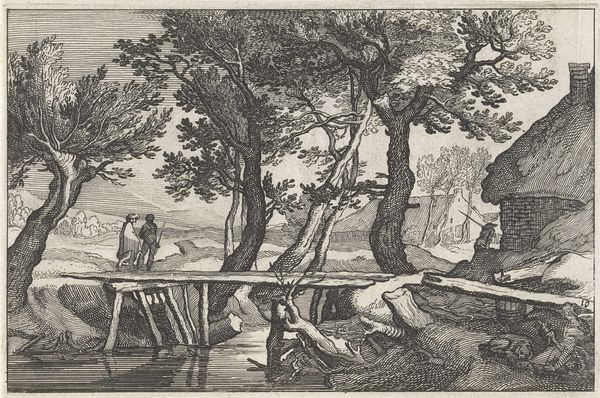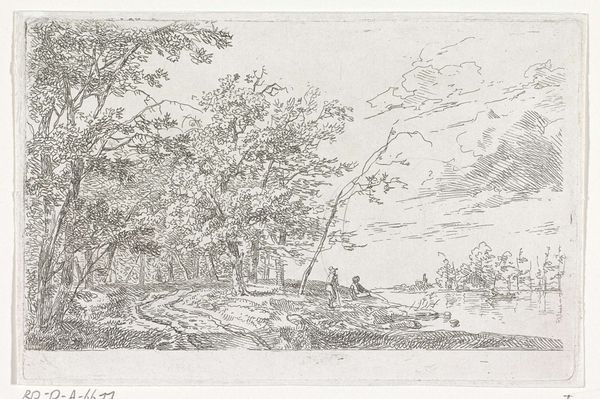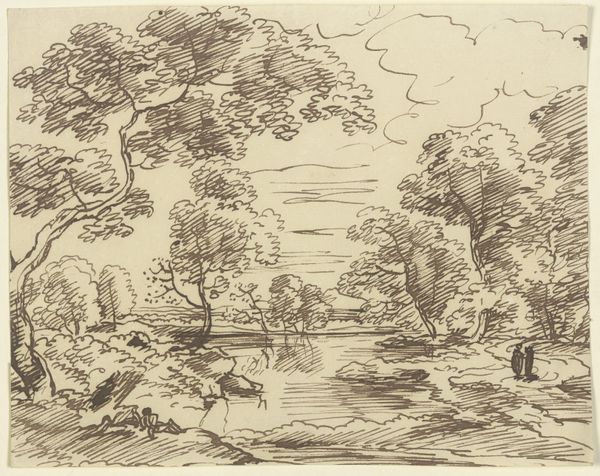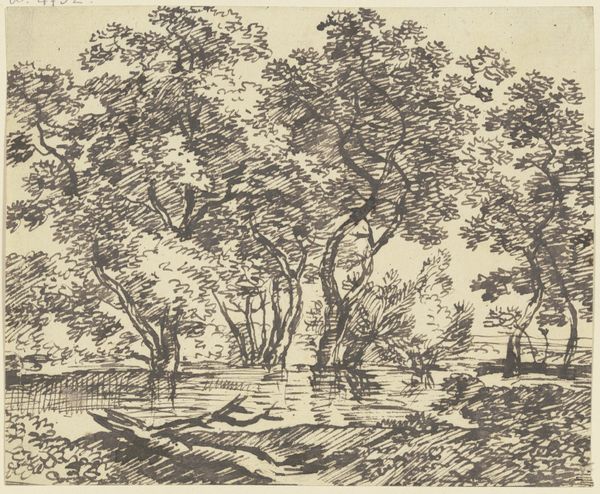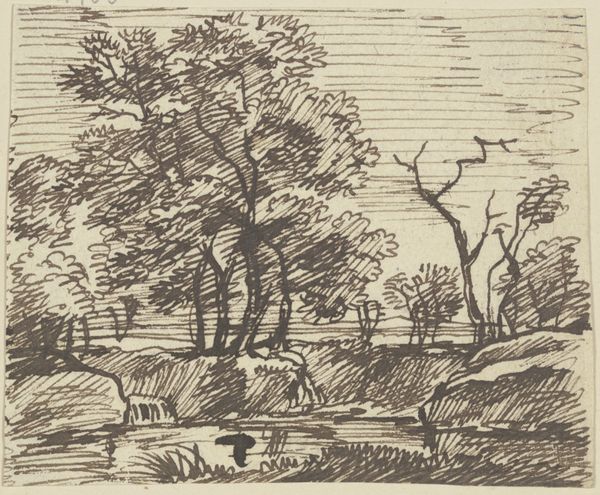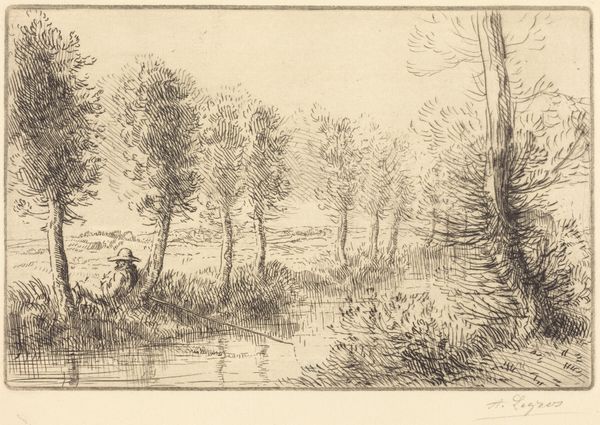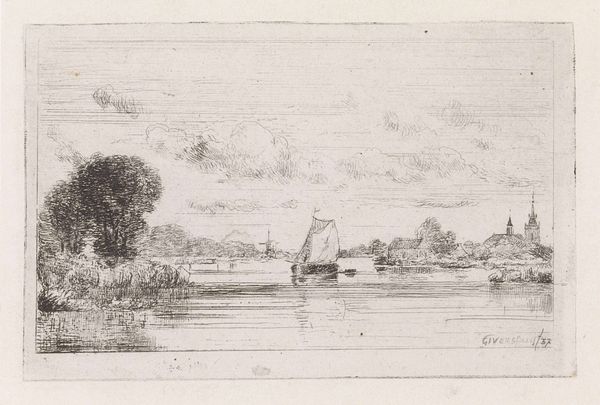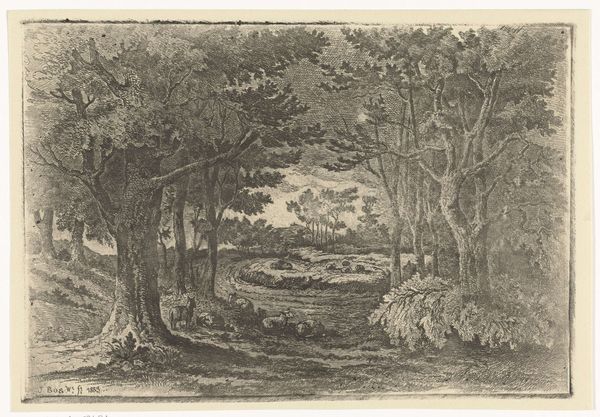
drawing, print, etching
#
drawing
#
narrative-art
#
pen drawing
#
dutch-golden-age
# print
#
etching
#
landscape
#
realism
Dimensions: height 154 mm, width 243 mm
Copyright: Rijks Museum: Open Domain
Curator: This is "Farmhouses and Bridge Over Ditch", an etching dating back to 1614, created by Boëtius Adamsz. Bolswert. It's part of the Rijksmuseum collection. Editor: The detail is incredible, especially given the medium. I am drawn into its tranquil and detailed stillness; that tiny thatched house makes me want to sit and breathe. Curator: Bolswert captured a really charming Dutch scene, with the little bridge crossing the ditch, connecting farmhouses. Note the contrast; a scene of the everyday versus what must be rendered precisely with tremendous skill and patience. Editor: I love how it’s a seemingly simple pastoral scene, but consider that 1614 in the Netherlands was a period of tremendous political and economic growth amidst complex social stratification. How do we interpret this peacefulness then, when the world was far from at peace? Was Bolswert making a deliberate comment or choosing to look away? Curator: Interesting. Or perhaps he captured what so many wanted to be true – a connection to nature and the simplicity of the rural, especially as the cities began their sprawling ascent. Maybe, this speaks to my own desire to step away and reconnect with what feels authentically nourishing in this world of overwhelming information. Editor: Authenticity, yes. But remember these idyllic scenes often omit the realities of rural labor. These landscapes, while beautiful, were also sites of significant inequalities and the often-harsh realities of farming life. Who benefited from the picturesque imagery that circulated? Curator: Good point. Looking again, the details—the fallen logs, the broken supports of the bridge—they speak, perhaps, to the ever-present challenge of existence, and our ability to endure despite all evidence. Editor: Exactly! The etching becomes a stage, in some ways, reflecting complex negotiations. Bolswert offers us the rural as something to both appreciate and interrogate. Curator: Well, that gives me lots to ponder! I had only considered this piece one of tranquility, but I realize now that there are layers that perhaps can reflect broader truths about both that time and our own. Editor: Art always holds more than initially meets the eye, doesn’t it? It allows us to examine our present through the past’s lens and to challenge what we often think we know.
Comments
No comments
Be the first to comment and join the conversation on the ultimate creative platform.
